As the digital realm evolves, so do the ways we experience art, history, and culture. The metaverse is a collection of virtual universes where people can interact, socialize, and create. It has emerged as the perfect space for museums, concerts, and any other events intended to be accessible beyond borders. In this article, we’ll look at some of the museums you can already visit virtually, as well as why museums are entering the metaverse, the obstacles they encounter, and how they can adapt to this digital space.
Why are Museums building in the Metaverse ?
Museums have always been the guardians of our collective knowledge and cultural heritage. As the metaverse continues to grow, many museums have taken the opportunity to broaden their reach, enhance accessibility, and play with new tools and possibilities.
With the potential to reach a global audience, digital museums can be visited by anyone with an internet connection at any time of the day, eliminating geographical constraints. Furthermore, people who might otherwise be unable to visit physical museums can now do so from the comfort of their homes.
Museums on the metaverse have the benefit of offering more immersive experiences than those found in many traditional exhibits. Visitors can explore museums by interacting with objects that might otherwise be off-limits, completing quests, and even collaborate with other visitors in ways that were previously unimaginable. The potential for this kind of technology to be implemented as a kind of “Alternate Reality” for physical museums is also enormous.
Digital museums will play a crucial role in preserving cultural heritage. High-quality 3D scans and virtual exhibits can ensure that art and artifacts are accessible for generations to come. The use of a digital space also means that museums can house more exhibits than their physical spaces would normally allow.
Why can it be difficult to bring museums in the Metaverse ?
While the metaverse presents exciting possibilities for museums, it comes with its unique set of challenges.
One of the initial hurdles museums face is the technological barrier. Not all institutions possess the resources or expertise needed to establish a robust digital presence in the metaverse. The development and maintenance of virtual exhibits are technically demanding and financially straining, potentially leaving smaller institutions at a disadvantage.
As museums venture into the metaverse, they must also carefully navigate the preservation of authenticity. It’s essential that virtual exhibits are harmoniously aligned with their physical counterparts. The digital experience should compliment, rather than compromise, the historical and cultural significance of the museum’s collections.
Finally, the question of security adds another layer of complexity to the puzzle. Just as any digital platform faces potential cybersecurity threats, museums must invest significantly and choose their partnerships wisely to protect their virtual collections from data breaches. This investment is crucial for ensuring the safety and integrity of their digital presence.
Maintaining the delicate equilibrium between technology, authenticity, and security is the key to making a smooth transition into the digital frontier.
How should museums engage with the Metaverse ?
To effectively enter the metaverse, museums must adopt a multifaceted approach with emphasis on collaboration, education, and interactivity.
Collaborative efforts with tech companies, virtual reality experts, and video game studios are vital for navigating the metaverse’s complex landscape. Such partnerships help museums overcome challenges and create the best possible metaverse exhibitions, tailor-made for their audiences.
Investing in the education and training of museum staff can be a valuable asset. Building expertise in digital curation, 3D modeling, and virtual experience design empowers museums to curate and present their collections creatively, while also facilitating discussions with partners who hope to create exhibition spaces.
Harnessing the metaverse’s interactivity is key to boosting visitor engagement. By embracing the interactive nature of the digital realm, museums can craft memorable experiences that captivate audiences and enhance their understanding of art, culture, and history.
Five Museums to visit in the Metaverse
To offer you a peek into the realms of possibility, here are a few museums that we’ve explored in the metaverse for you:
The Met’s Robloxian Odyssey
The Met’s collaboration with Roblox is a perfect example of a museum blending art, education, and gaming. Since August 3rd, visitors could use The Met’s Replica app to scan artworks and unlock digital replicas of famous art pieces. Once unlocked, these wearables could be used for their Roblox avatars. Whether you wanted to rock Van Gogh’s iconic straw hat or don Hatshepsut’s regal headcloth, the Roblox Museum can become your personal fashion show. This experience seamlessly merged art appreciation with interactive gaming. Whether you explored the museum in person or virtually, the Met’s Robloian Odyssey is a fun and unique experience. Our top picks for the virtual tour? William the Hippo, the trusty tour guide, and the Medusa hairstyle replica. Who could resist the chance to sport a style straight out of Greek mythology?

Journey Through Centuries: European Masters at the Vordun Museum
The Vordun Museum is home to an impressive array of exhibits, all of which offer innovative HUD interactions. The architectural style of the museum, reminiscent of a real-world art institution, provides a dynamic setting for its unique selection of exhibits.
Among them, you’ll discover European Masters: 300 Years of Painting, which displays a series of beautiful paintings made between 1500 and 1799. Lip Service showcases the watercolor art of Celeste Forwzy, while A Night To Remember presents an immersive experience commemorating the tragic tale of the Titanic.
Just as you would in a real museum, you can leisurely sit and savor the artworks before your eyes. It was also great to see that the exploration was made engaging with a particular attention to details and insightful information about the artists scattered across the walls. Although it was launched a few years ago, it remains a shining example of how metaverse museums can offer state of the art immersive experiences in the digital realm.
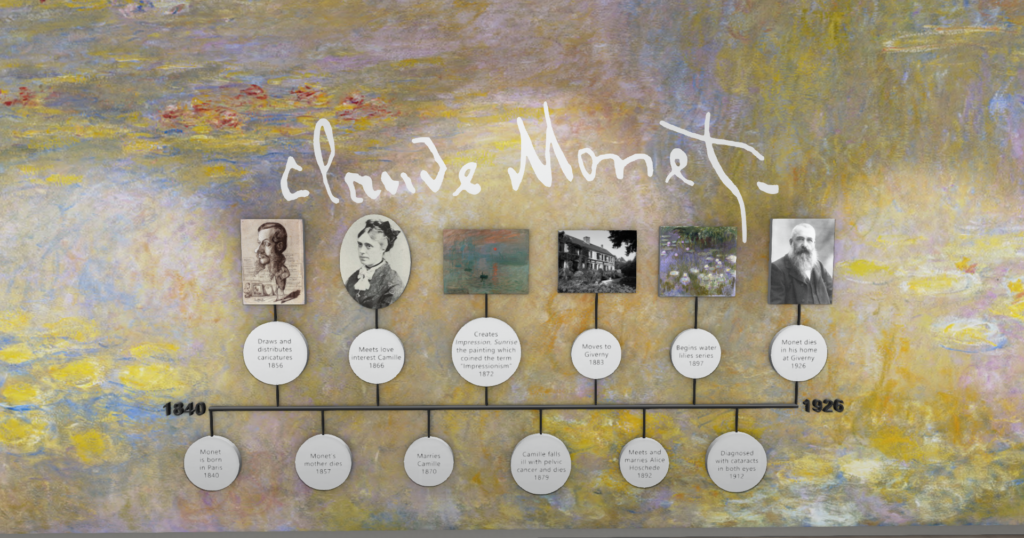
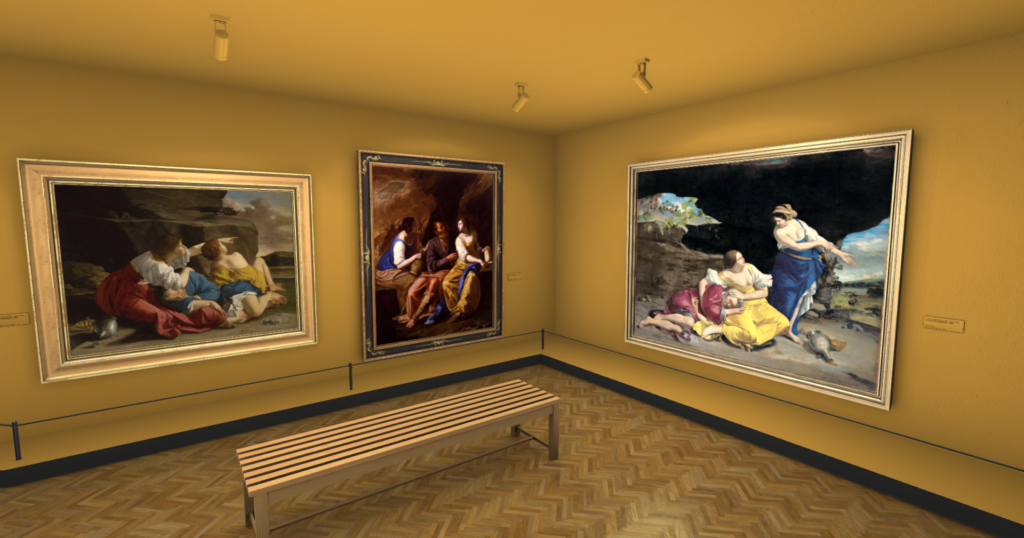
From Classic to Digital: Explore The Greats
The Greats is a prime example of the fusion of traditional artistry with the digital era. At its core, the museum juxtaposes the works of Wolfgang Beltracchi, the world’s most celebrated art forger, with the realm of unforgeable digital art. Armed with encyclopedic art knowledge, mastery of painting techniques, and meticulous execution, he recreates masterpieces that could easily be mistaken for the work of old masters. With over 30 pieces meticulously documented in metadata, Beltracchi’s creative genius shines as he reimagines the iconic “Salvator Mundi” in the distinctive styles of seven legendary artists, from Picasso to Warhol.
Beltracchi crafts every element in these artworks with an amazing attention to detail, blending traditional techniques with modern art forms like photography and graphic design for a captivating fusion of past and present. The Greats stands as a testament to art’s ever-evolving nature, offering a collection of 2,608 unique and original digital artworks. Overall, the original and colorful architecture adds an exciting and exotic flair to the visit, making it quite an intriguing experience.
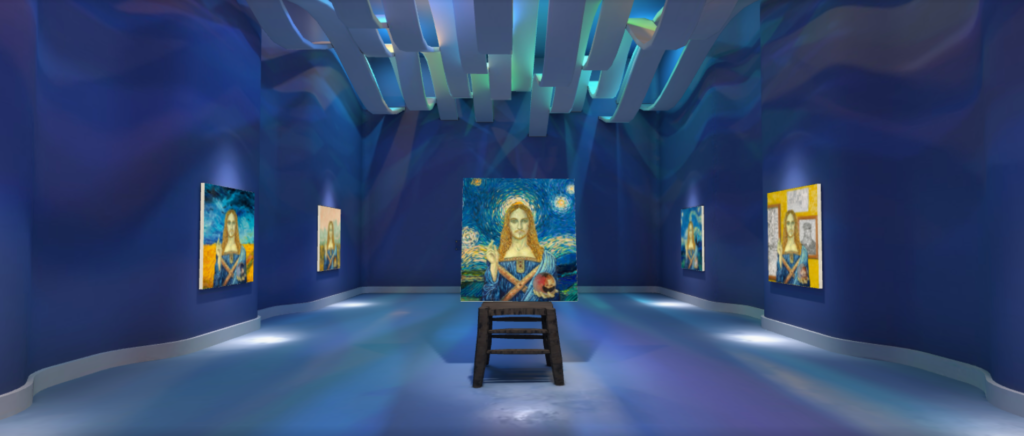
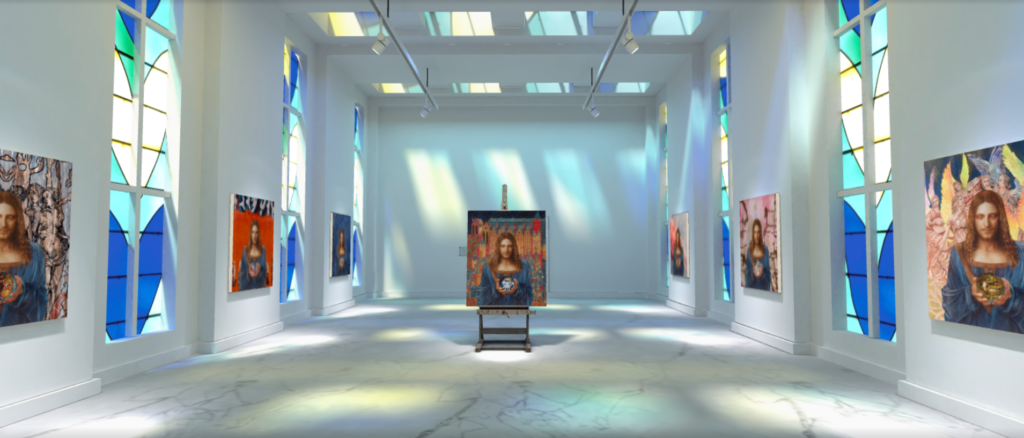
The British Museum’s Inaugural Metaverse Adventure
In a groundbreaking move, the British Museum is set to partner with The Sandbox. This collaboration will enable users to explore the museum’s rich history and collections through digital collectibles and immersive experiences.
The British Museum, as the world’s first public national museum, has always been committed to its mission of being a “museum of the world, for the world,” and this vision perfectly extends to this project in the metaverse.
With the assistance of their licensing partner, LaCollection, the British Museum aims to make its historical artifacts and cultural treasures accessible to global audiences within The Sandbox. While the official launch date of this experience has yet to be announced, it promises to enrich educational opportunities and provide history and culture enthusiasts with a brand new way to engage with the museum’s collections. This highly anticipated project is sure to be a standout metaverse museum experience!
Maison NABI, “être SoiE” exhibition showcases gameplay and artefacts
In March 2023, NABIYA unveiled Maison NABI Haetera, a virtual venue dedicated to hosting events around art, fashion, luxury, design, and performance. The innovative space hosted its first exhibition, “être SoiE” in collaboration with the Musée des Tissus & les arts décoratifs of Lyon, renowned for housing the world’s most extensive collection of silk-related exhibits, spanning 4,500 years of history.
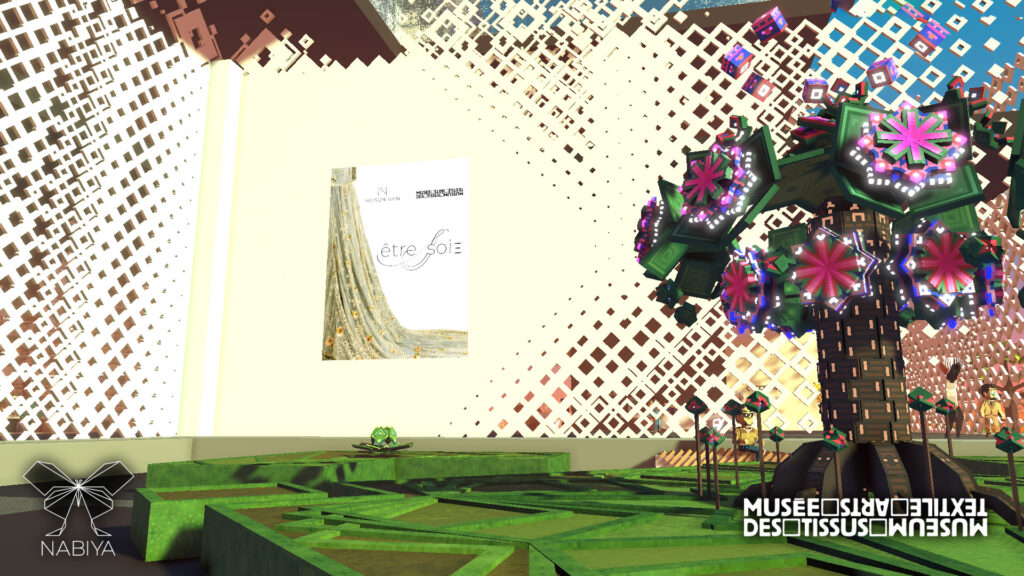
The exhibition, thoughtfully curated for an online gamified experience, immersed more than 18,000 unique visitors in the exquisite art of silk-making. Divided into three themes – sericulture and the silk roads, the Jacquard weaving loom, and the iconic historical costumes of the Musée des Tissus – the exhibit offers a unique chance to explore priceless fashion pieces that span from the 14th century to the present day. This opportunity is all the more precious now that the Museum is undergoing extensive renovations.
Over the course of two weeks, our digital conservator led about 24,000 guided visits. The exhibition is set to reopen very soon, allowing even more visitors to lose themselves in the art of silk-making.
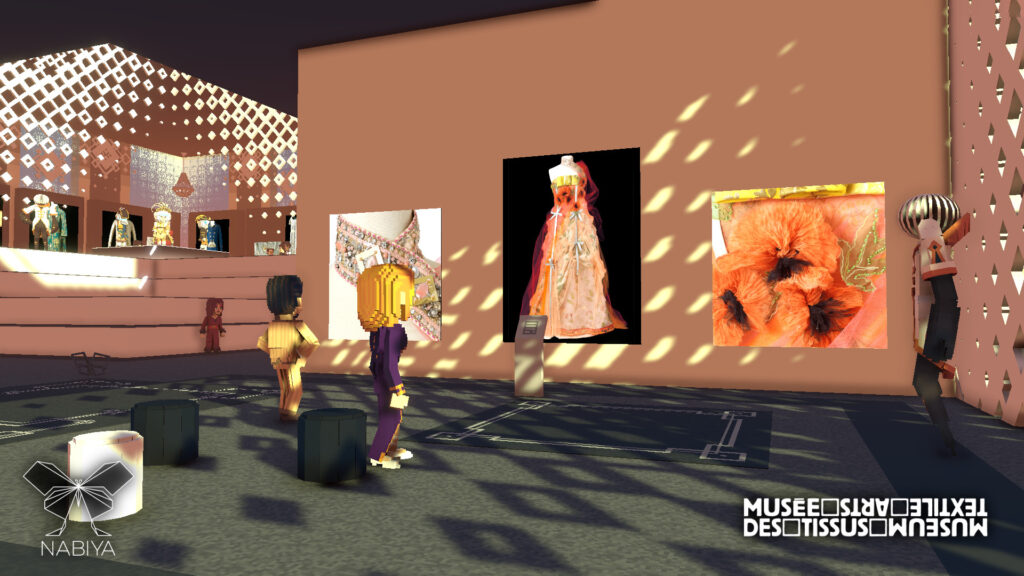
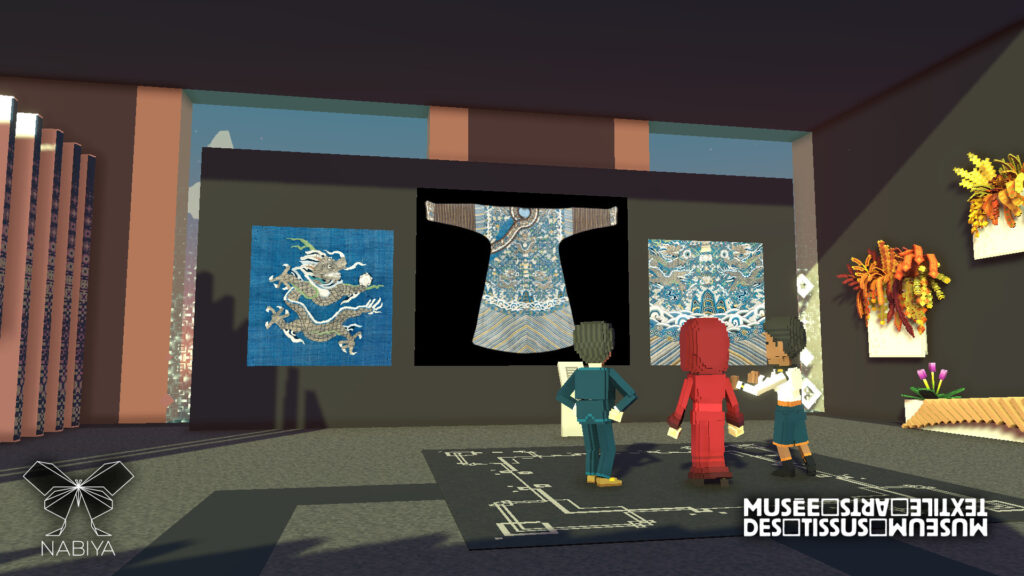
What are the next challenges for museums in the Metaverse ?
As museums continue to forge new paths into the metaverse, it’s clear that the challenges they face are also opportunities for growth and innovation. These obstacles represent more than just roadblocks; they serve as stepping stones toward crafting a digital future for museums.
One of the emerging challenges is how to maintain exhibitions once launched in the metaverse. The traditional concept of static displays no longer applies; instead, virtual exhibitions require attention and updates to keep visitors engaged. This means constantly adding fresh content, integrating valuable user insights, and guaranteeing the smooth operation of interactive elements. Maintaining vibrant and dynamic metaverse exhibitions, which both mirror and compliment their real-world counterparts, will be crucial to sustaining audience interest and encouraging repeat visits.
Another pressing challenge lies in understanding visitor dynamics and behaviors within the metaverse. The careful analysis of user engagement data and feedback will be pivotal in tailoring exhibitions, events, and interactive experiences to meet evolving preferences and interests.
Despite the challenges that building in the metaverse entails, embracing the digital future presents museums with new opportunities to craft exhibitions without borders.
We’re deep into developing ELEMENTS over on The Sandbox, Spatial and Steam. Plus, keep an eye out for our fully on-chain social strategy game, Chain of Trust. Not just that, we’re also building some exciting projects like Women in Tech, Dogami and Cyberkongz (in co-production with the cool team from the SandRush). Stay tuned, lots coming your way soon!